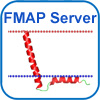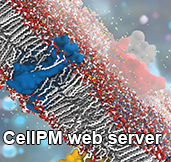
Resources
Databases
The OPM (Orientations of Proteins in Membranes) database provides 3D structures of transmembrane, monotopic and peripheral proteins whose spatial positions were optimized with respect to the lipid bilayer by the PPM2.0 method. OPM also presents a comprehensive classification of membrane-interacting proteins into different families and superfamilies. It includes protein intracellular localization, structural parameters of TM domains, and links to relevant bioinformatics resources. OPM was integrated with PDB and PDBsum databases.
The Membranome database integrates available information on single-spanning (bitopic) membrane proteins from six organisms (Homo sapiens, Arabidopsis thaliana, Dictiostelium discoideum, Saccharomyces cerevisiae, Escherichia coli, and Methanocaldococcus jannaschii) to facilitate proteome-wide analysis of their structures, functions, and evolution. It provides hierarchal classification of these proteins and their complexes, amino acid sequences, domain architecture, functional annotation, topology, intracellular localization, protein-protein interactions, 3D structures of single transmembrane α-helices and their stable homodimers in membranes, and links to other resources.
The PerMM database collects computationally-generated data along with experimental permeability coefficients obtained for artificial and natural membranes, including BLM, PAMPA, Caco-2 cells, and BBB. It currently contains ~500 molecules, ranging from small organic compounds to natural products of diverse chemical structures. The database provides downloadable coordinate files and interactive visual information to represent optimal localization and translocation pathways of molecules acrossthe lipid bilayer. Presented data allow assessment of the role of passive diffusion in transport of drugs and other compounds across biological membranes.
Web Tools
 The PPM (Positioning of Proteins in Membranes) web server calculates rotational and translational positions of transmembrane and peripheral proteins in membranes using their 3D structure as input.
The PPM (Positioning of Proteins in Membranes) web server calculates rotational and translational positions of transmembrane and peripheral proteins in membranes using their 3D structure as input.
 The FMAP (Folding of Membrane-Associated Peptides) web server predicts the existence of individually stable α-helices formed by peptides and proteins in aqueous solution, protein molten globule state, micelles, and lipid bilayers and provides all-atom models of single-helical protein fragments in membranes.
The FMAP (Folding of Membrane-Associated Peptides) web server predicts the existence of individually stable α-helices formed by peptides and proteins in aqueous solution, protein molten globule state, micelles, and lipid bilayers and provides all-atom models of single-helical protein fragments in membranes.
 The TMDOCK (TM helix DOCKing) web server predicts formation of dimeric complexes by single-spanning transmembrane (TM) proteins. Current version of the server calculates thermodynamic stabilities, geometry parameters, and 3D structures of parallel homodimers of TM α-helices.
The TMDOCK (TM helix DOCKing) web server predicts formation of dimeric complexes by single-spanning transmembrane (TM) proteins. Current version of the server calculates thermodynamic stabilities, geometry parameters, and 3D structures of parallel homodimers of TM α-helices.
CellPM web server implements a physics based method for analysis of peptide-membrane interactions and prediction of peptide ability to cross the lipid bilayer via an energy-independent pathway. It can use an amino acid sequence or a predefined 3D structure of the peptide to calculate its optimal spatial position in membrane, the energy of membrane binding, the lowest energy translocation pathway across the lipid bilayer, and the permeability coefficient.




